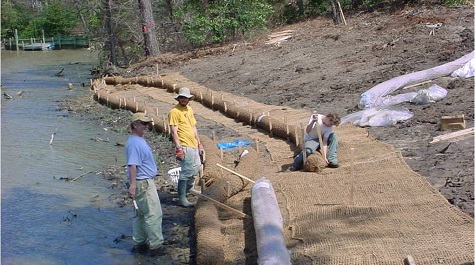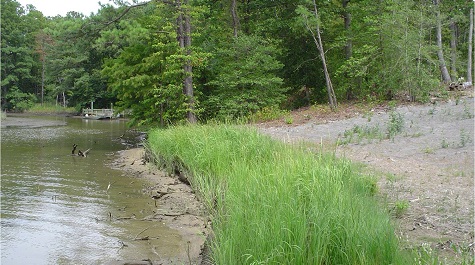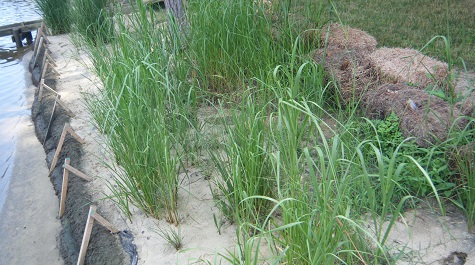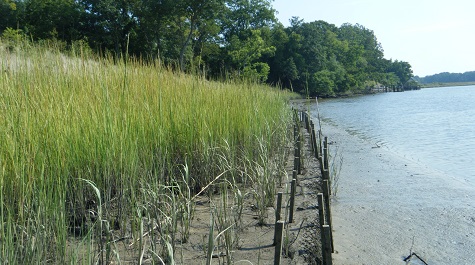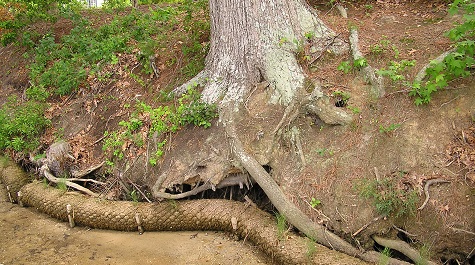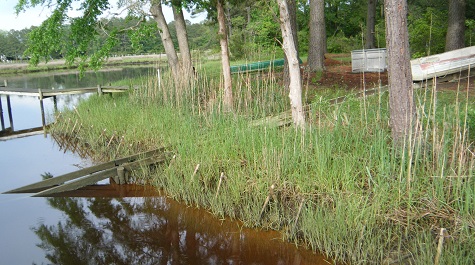Temporary Growing Materials
Temporary growing materials are manufactured products and geotextiles that provide temporary stabilization at upland and wetland planting areas. These products come in different grades, lengths and diameters to suit a variety of site conditions. The preferred materials used for this purpose are biodegradable and non-plastic so they decay within 3-5 years in tidal settings.
Key Factor: will the planted tidal marsh area persist after the temporary growing materials disappear? If sand fill or plants will eventually be washed out by waves or tidal currents, then another type of permanent containment structure may be needed (see marsh sills).
Suitable Sites
- Marsh restoration areas and planted marshes on tidal coves, very shallow tidal creeks, lakes, ponds
- Tree removal areas
- Graded or terraced banks under landscape restoration
- Elevations higher than mid-tide level
- Minimal wave and boat wake action, not designed to reduce wave energy
Guidelines for Temporary Growing Materials
- Designed to support plant growth, should be used in combination with vegetation management, planted marsh, and/or bank grading and landscape restoration
- Most effective above mid-tide level, away from regular wave action
- Maintain full contact with ground along entire length
- Must be aggressively staked into place along both sides, hardwood stakes only
- Not always necessary to plant into logs, surrounding vegetation will readily grow into them
- Frequent inspections and re-staking are essential
- Causes for failure include excessive wave action, frequent tidal inundation, inadequate monitoring and staking, and absence of vegetation as primary stabilization technique


